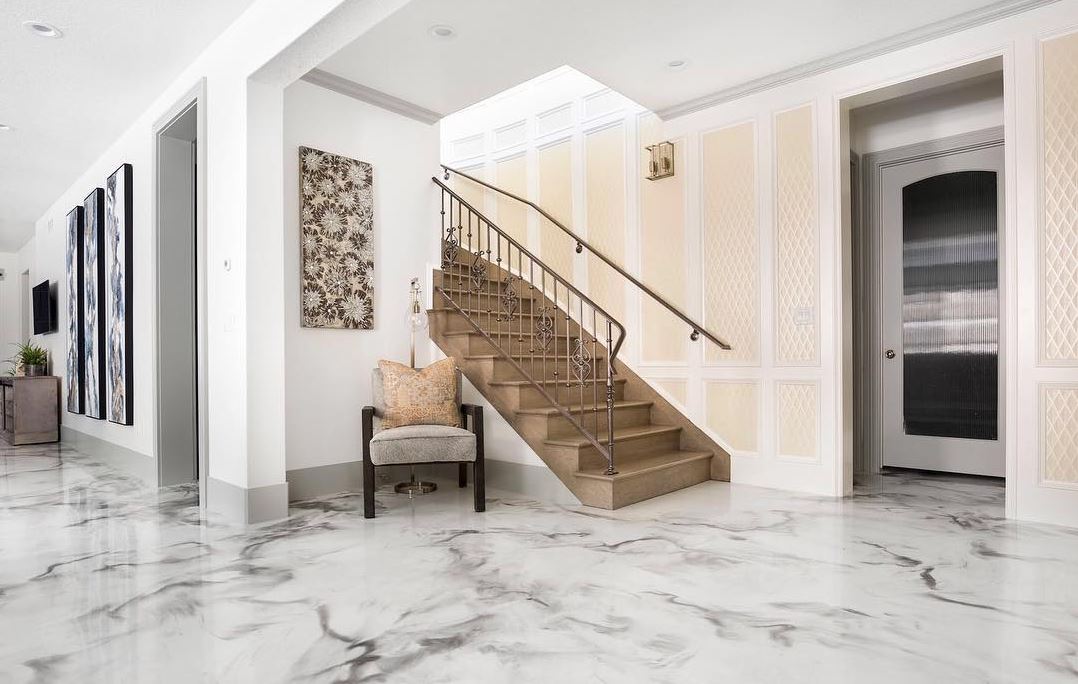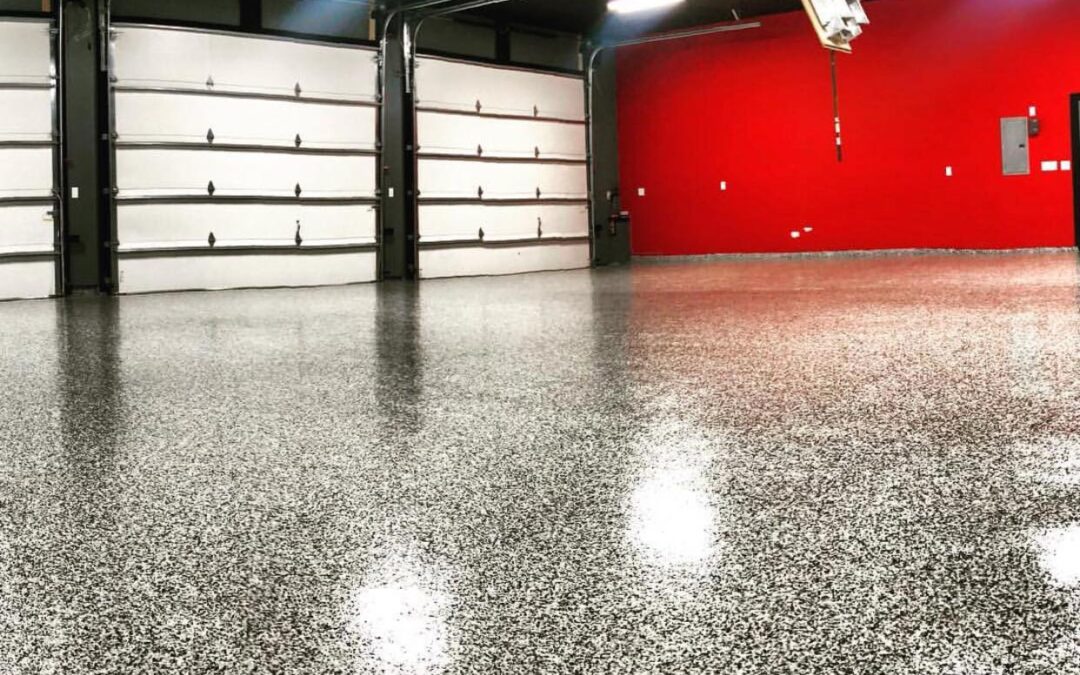Get the Gloss: The Aesthetics of Commercial Epoxy Flooring
There’s no denying the breathtaking sheen of an epoxy floor. With its glossy finish and durable surface, it can bring a showroom-worthy aesthetic to any commercial space. It can also help protect your floors from normal wear and tear, making it one of the most aesthetically pleasing yet practical flooring solutions on the market today. Whether you’re looking for a sleek industrial edge or something more contemporary in style, epoxy flooring is sure to make a statement – and increase your business’s value! In this blog post, we’ll look at the beauty behind commercial epoxy flooring as well as explore some tips for choosing the right system for your space. Let’s get started!
Overview of Commercial Epoxy Flooring – Its Advantages and Aesthetics
Epoxy flooring provides more than just an attractive sheen; it offers a multitude of advantages that combine aesthetics with functionality. This high-performance flooring solution is known for its exceptional durability, making it highly resistant to heavy traffic, abrasions, and even chemical spills, thereby minimizing maintenance costs and ensuring longevity.
The lustrous finish of epoxy not only elevates the visual appeal of a space but also acts as a reflective surface, brightening the area by bouncing light off its glossy surface. This creates an atmosphere of professionalism and cleanliness, enhancing the overall ambiance of any commercial space.
When it comes to aesthetics, the customization options for epoxy flooring are truly endless. With a wide variety of colors and patterns available, businesses can tailor their floors to perfectly match their brand image and existing decor. Furthermore, some epoxy systems offer unique decorative options such as metallic finishes or quartz-like textures, adding a touch of luxury and sophistication to any space.

Commercial Flooring
In a nutshell, commercial epoxy flooring is not just a surface, but an investment that seamlessly blends beauty and practicality. It creates a visually pleasing environment that can endure the rigors of commercial use while offering the benefits of easy maintenance, durability, and customization. Whether it’s a retail store, office building, or industrial facility, epoxy flooring is a smart choice that adds value and enhances the overall appeal of any commercial space.
Tips for Choosing the Right Commercial Epoxy Flooring System
When choosing a commercial epoxy flooring system, several factors need to be considered to ensure it meets your business needs and aesthetic preferences.
- First, evaluate the expected foot traffic and chemical exposure in your area. More durable systems may be required for high-traffic zones or locations prone to chemical spills.
- Second, consider the aesthetic appeal. Choose a color and pattern that aligns with your brand image and complements the overall decor of your space. Some epoxy systems offer custom designs or logos embedded in the floor, which can enhance your branding efforts.
- Third, think about maintenance needs. Epoxy floors are generally low-maintenance, but some finishes may require specific cleaning methods. Opt for a system that is easy to clean and maintain to keep your floor looking its best.
- Lastly, consider the installation process and downtime. Depending on the epoxy flooring system, the installation and curing time can vary. Choose a system that minimizes disruptions to your business operations.
The right commercial epoxy flooring system is one that balances aesthetics, durability, maintenance needs, and installation requirements to create a floor that not only looks great but can withstand the demands of your commercial space.
Pros & Cons of Different Types of Epoxy Floors
When it comes to epoxy flooring, there’s no one-size-fits-all solution. The type best suited for your commercial space largely depends on the specific needs and requirements of your business. Here, we explore the pros and cons of different types of epoxy floors:
Standard Epoxy Coatings
- Pros: Cost-effective; available in a multitude of colors; provides a seamless, glossy finish that’s easy to clean.
- Cons: Not suitable for spaces exposed to high temperatures or extreme chemicals; may fade when exposed to UV light.
Self-Leveling Epoxy
- Pros: Creates a smooth, level surface on old, cracked, or uneven floors; available in various colors and designs.
- Cons: More expensive than standard epoxy; requires professional installation to ensure a level surface.
Epoxy Mortar Floors
- Pros: Highly durable and resistant to chemicals and heavy impact; suitable for high-traffic and industrial areas.
- Cons: Limited design options; professional installation required; higher cost.
Quartz-Filled Epoxy Floors
- Pros: Combines high-performance epoxy polymer resins with colored quartz grains; excellent for decorative spaces that require sanitary and slip-resistant properties.
- Cons: Installation is labor-intensive; higher cost due to materials and installation.
Metallic Epoxy Floors
- Pros: Creates a unique, three-dimensional appearance with high-gloss finish; ideal for showrooms or areas where aesthetics matter.
- Cons: More expensive; requires professional installation to achieve the desired artistic effects.

Metallic Epoxy
In choosing the right epoxy floor for your commercial space, consider the balance between aesthetics, budget, durability, and overall maintenance requirements.
Common Mistakes to Avoid when Installing an Epoxy Floor
Avoiding common pitfalls during epoxy floor installation is crucial to ensure the longevity and durability of your investment. Here are some common mistakes to be mindful of:
- Insufficient Surface Preparation: This is a leading cause of epoxy floor failures. The floor surface needs to be clean, dry, and free from any grease, oil, or other contaminants that could prevent the epoxy from adhering properly.
- Ignoring Moisture Levels: Epoxy coatings do not adhere well to damp surfaces. So, it’s necessary to check the moisture level of the concrete before applying epoxy. Failure to do so can lead to peeling and blistering of the coating.
- Not Testing the Concrete for Sealer: If the concrete has been previously sealed, epoxy might not stick to the surface. Therefore, conducting a small adhesion test before installing the epoxy floor is important.
- Applying Epoxy in Incorrect Temperatures: Epoxy should not be applied in extreme cold or heat as it can affect the curing process and ultimately the performance of the floor.
- Uneven Application: Uneven coats can lead to patches of different thicknesses across the floor, affecting both the aesthetics and the durability of the floor.
- Skipping the Sealant: Applying a sealant after the epoxy has cured provides extra protection to your floor, enhancing its durability and making it easier to clean.
By avoiding these common mistakes, you can ensure a proper and durable installation of your epoxy floor.
Maintenance Guide – Cleaning Techniques & Scheduling
Maintaining your epoxy floor is essential to its longevity and appearance. Follow these simple cleaning and maintenance routines:
- Daily Maintenance: Sweep the floor daily with a soft-bristle broom or a dust mop to remove dust and dirt. This helps prevent surface scratches and maintains the shine of the epoxy floor.
- Weekly Maintenance: Perform a thorough cleaning using a mop and a mild, pH-neutral cleaner diluted in warm water. Avoid using harsh or abrasive cleaning agents that might damage the epoxy finish.
- Spills: Clean up spills immediately to prevent staining and slip hazards. Use a soft, absorbent cloth or paper towel to wipe up the spill, then clean the area with a damp mop.
- Periodic Maintenance: Depending on the traffic and use of the space, consider a deep cleaning every six months. This includes more intensive scrubbing, and in some cases, professional cleaning may be required.
- Sealant Application: Reapply sealant as recommended by your epoxy floor provider. This is usually needed every 1-2 years, depending on the wear and tear.
Remember, a well-maintained epoxy floor not only looks clean and shiny, but it also lasts longer and performs better. Always adhere to these cleaning techniques and scheduling to keep your epoxy floor in optimal condition.
In conclusion, epoxy flooring is a versatile and durable option for commercial spaces. By understanding the different types, avoiding common installation mistakes, and following proper maintenance techniques, you can ensure a high-quality epoxy floor that not only looks great but can withstand the demands of your business operations.

Epoxy Floor Cleaning

